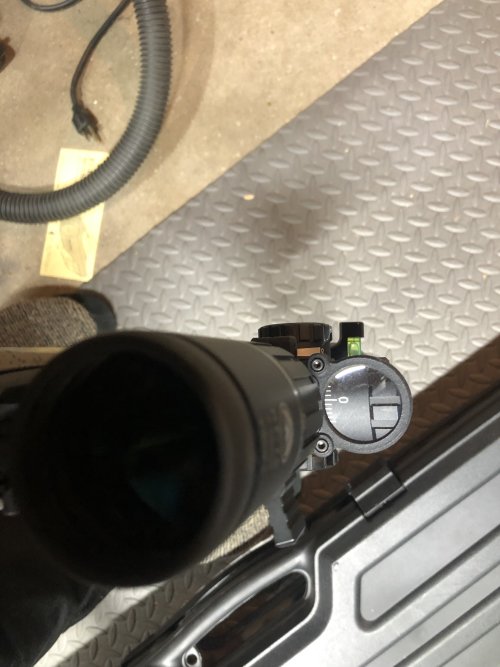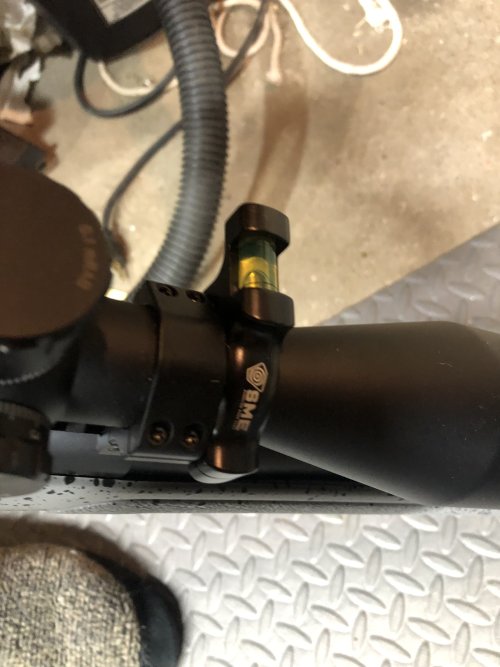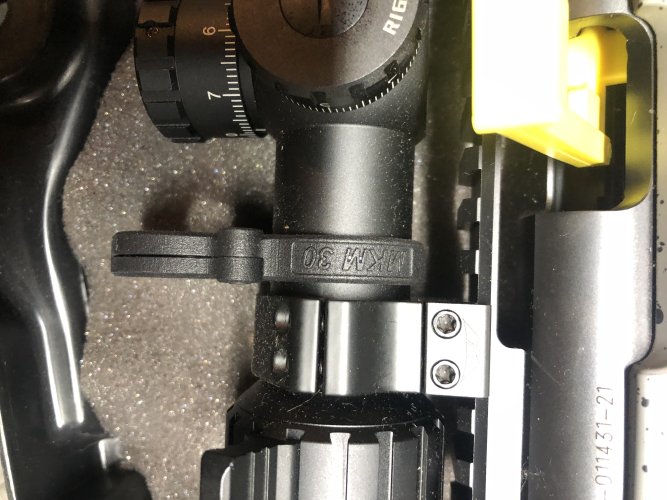Navigation
Install the app
How to install the app on iOS
Follow along with the video below to see how to install our site as a web app on your home screen.
Note: This feature may not be available in some browsers.
More options
You are using an out of date browser. It may not display this or other websites correctly.
You should upgrade or use an alternative browser.
You should upgrade or use an alternative browser.
Rifle scope bubble level reviews
- Thread starter Jjw4413
- Start date
millerkiller77
Well-known member
Nightforce and Talley make anticant levels that replace your top scope ring. They aren't very precise but will get you close enough
fishing4sanity
Well-known member
I've used bubbles from Vortex, MKM Machining and Warne that all seemed to work well.
morgaj1
Well-known member
- Joined
- Feb 2, 2020
- Messages
- 555
My favorite is MK Machining, but they are pricey. I've been using some made by Monstrum Tactical that have been great and they are only $16 on Amazon.
Whiskey3
Member
- Joined
- Feb 26, 2013
- Messages
- 43
Check the accuracy 1st level. It’s more precise than a straight bubble level.
buffybr
Well-known member
I put a Talley top scope ring level on my Vanguard .308 Win.
I've never used it hunting, but I practice almost every week shooting at gongs out to 430 yards.
Once the gun is set on the target, you have to slightly raise your head to see the level, then carefully thghten your cheek back on the stock.
I haven't convinced myself to put one on either of my main hunting rifles.

I've never used it hunting, but I practice almost every week shooting at gongs out to 430 yards.
Once the gun is set on the target, you have to slightly raise your head to see the level, then carefully thghten your cheek back on the stock.
I haven't convinced myself to put one on either of my main hunting rifles.

noharleyyet
Well-known member
Ow do you bubble guys account for torque imperfection...my ocd dwells on stuff like that.
Get yourself an offset version so you don’t have to break your cheek weldI put a Talley top scope ring level on my Vanguard .308 Win.
I've never used it hunting, but I practice almost every week shooting at gongs out to 430 yards.
Once the gun is set on the target, you have to slightly raise your head to see the level, then carefully thghten your cheek back on the stock.
I haven't convinced myself to put one on either of my main hunting rifles.

What do you mean by torque imperfection?Ow do you bubble guys account for torque imperfection...my ocd dwells on stuff like that.
noharleyyet
Well-known member
Getting the top ring concentrically level with the bottom? I have hell using the mount level in my Wheeler kit.
Caseknife
Well-known member
Feeler gage? I just eyeball the gap on each side, but I don't shoot long distance either.Getting the top ring concentrically level with the bottom? I have hell using the mount level in my Wheeler kit.
noharleyyet
Well-known member
Same.Feeler gage? I just eyeball the gap on each side, but I don't shoot long distance either.
Farmerj
Well-known member
- Joined
- Dec 12, 2021
- Messages
- 1,072
SFC B
Well-known member
I have a set of Hawkins Precision Rings with an integrated level on Simo......BIG bonus is they are made right here in the Springs and I have shot with the owner and VP.....great guys.
morgaj1
Well-known member
- Joined
- Feb 2, 2020
- Messages
- 555
Have you tried it? Short shots, it makes little difference. The further out you go, canting the rifle makes a big difference.If you can’t shoot the difference with one on versus without one, you’re only falling for a gimmick. Test one for yourself.
Farmerj
Well-known member
- Joined
- Dec 12, 2021
- Messages
- 1,072
OntarioHunter
Well-known member
- Joined
- Sep 11, 2020
- Messages
- 5,998
Thanks for the link. Very interesting ... but not very relevant for someone like me who's not interested in lobbing bullets at animals on the next planet. The bit about keeping the scope as low as possible to the bore makes sense. I need to send it to my daughter's father-in-law. He showed me his old Remington TargetMaster .22 when I was at his place for Christmas dinner. A local gunsmith had mounted a 1" diameter hunting scope (cheap knockoff imitation of something fancy). I was shocked to see it wearing scope rings of different heights. The rear ring appeared to be "high" and front one probably medium, maybe low. He said it is zeroed but I'm surprised he didn't run out of elevation adjustment. The rings were no name flat finish. Getting on the crosshairs required about 3/4" daylight between my cheek and stock. He actually plans to shoot competition targets (doesn't hunt). I tried to convince him this was a mess (hopefully the scope tube hasn't been dimpled). But of course what do I know ... I'm not a gunsmith like old Cal (recently deceased). I have some retired Weaver 1" medium height rings that I'd be glad to set him up with ... but I don't know anything. He could definitely use low height rings for good cheek weld. Cal obviously just unloaded a bunch of odds and ends stuff on someone who doesn't know anything about guns. e.g.: Brian showed me the BSA .270 Win that's been pounding him to shit at the range. As soon as I looked at it I knew it was not made by BSA. It's a 1917 Springfield with a BSA add-on barrel. The reason it was kicking is it's on a homemade stock with a goofy drop at comb. "No, my dad gave me that gun and it was new from BSA. He told me so." BSA did sell remanufactured military rifles but their work was top shelf (glossy finish, rosewood caps, etc). This was crap. I mean, the checkering on both sides of pistol grip didn't come close to matching and no checkering on fore end. Who knows what kind of wood was used. Not walnut. I had to go on line to finally convince him it was military surplus not factory BSA. Obviously, if a super heavy 1917 in only .270 is beating him up, there must be something seriously wrong with the stock. "Here, you can order a new stock from Boyd's and make that gun a shooter AND a looker. I'll show you how to drop it in the new wood." Nope. I'm not a gunsmith so what do I know. Anyway, after reading that link, I now know a lot more. Thanks again.
Last edited:
Similar threads
- Replies
- 5
- Views
- 370
Latest posts
-
-
-
-
Help Me Legalize Semiauto Rifle Big Game Hunting In Pennsylvania
- Latest: Schutzhund
-







